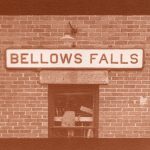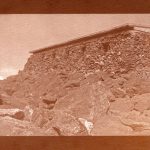Several weeks ago I agreed to participate in an alternative process print exchange that was organized on one of the on-line fora I frequent.
A print exchange in its simplest form, means that a group of people agree to send a print to each of the folks who participate. In this case nine folks (including myself) enrolled; eight of us are from the US and one from The Netherlands.
I spent a full day on Wednesday printing cuprotypes for this exchange. Yesterday, I trimmed the prints, signed them and packaged them. This morning I took the envelopes to the post office.
The ‘rules’ of the print exchange require one to send a single print. However, being an overachiever (Ha!) I decided to send three prints*… one photo each from the three northern New England states, each toned differently.
I chose to send cuprotypes as this process is not commonly used even among experienced alt process printers. Thus, I figured I could do a little evangelizing for this interesting, inexpensive and relatively simple process.
Stalwart readers will recognize all of these photographs and may even remember seeing them as cuprotypes in the past. I make no apologies for the repetition. They should be ‘new’ to the members of the print exchange
The Bellows Falls image and the Tiptop House image are older exposures (from January 2012 and September 2013, respectively) that I knew looked good printed in the red-brown of cuprotype.
The Tiptop House print was supposed to end up a chocolate brown tone rather than the red-brown of the untoned print. Obviously this toning method did not quite work as planned. I’m not sure why but I have a hypothesis. I won’t bother describing all of the technical details and glitches here.
The Burnt Head image is from our trip to Monhegan Island this past June. I was hoping that it would look good in the more neutral tone of a cuprotype treated with an iron-based toner.
* Really, I was having trouble on narrowing down the choices!!!!



